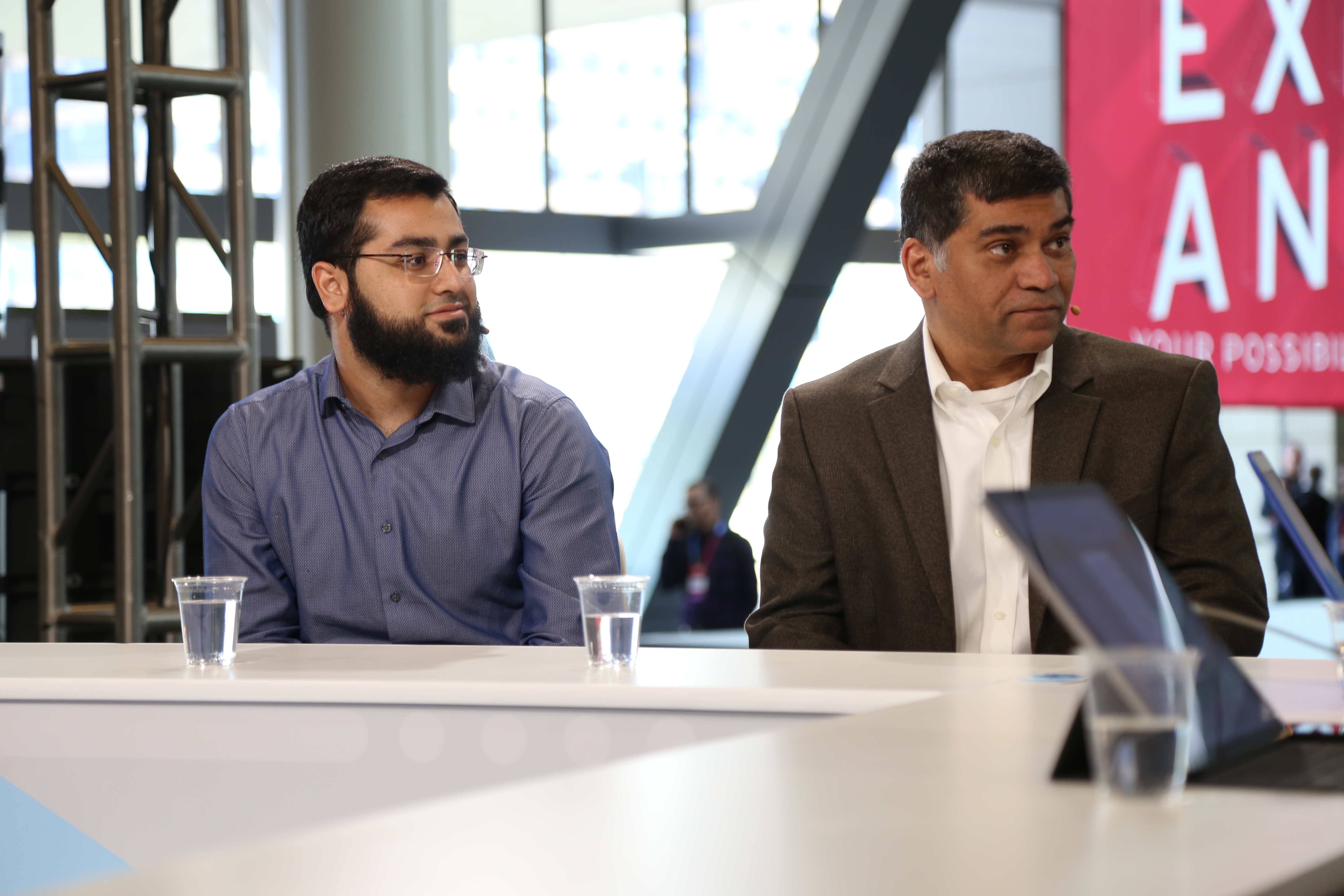 BIG DATA
BIG DATA
 BIG DATA
BIG DATA
 BIG DATA
BIG DATA
Dropping off some 21 million packages daily across 200 countries, the United Parcel Service of America Inc. has plenty of interactions to track. Known for its logistics prowess, UPS has managed to evolve business for today’s digital overhaul, averaging 200 million daily tracks on its revamped system launched last year. Their record was 335,000,000 tracks in a single day.
How have they accomplished this? The tracking system was all built on a new Red Hat OpenShift platform developed by their IT team. And while success has been a huge motivation, so has not being afraid to fail in order to succeed.
Nish Jani (pictured, right), senior application development manager at UPS, and Khurshid Sohail (pictured, left), application developer at UPS, spoke with Stu Miniman (@stu) and John Walls (@JohnWalls21), co-hosts of theCUBE, SiliconANGLE Media’s mobile livestreaming studio, during the Red Hat Summit in Boston. They discussed UPS’ digital transformation, the successes and failures, and how to navigate it all (see the full interview with transcript here). (* Disclosure below.)
[Editor’s note: The following has been condensed for clarity.]
Miniman: If UPS does logistics, those were pretty complicated before. So you needed a digital transformation. Maybe we could start with — what were some of the objectives? What was holding you back or limited before?
Jani: So before we were on a monolithic system, a legacy system, and the costs per track were very expensive. And in order to drive new need, we needed to redevelop ourselves and redesign ourselves. And the way we did that was we transformed by moving away from our traditional waterfall models, which typically took six months to deploy new services, and we went to within weeks. And the way we did that was to develop agile methodologies. Using OpenShift, we were able to develop and deploy applications more quickly.
Sohail: Our goal was to get the old track system off the legacy model into a containerized, on-premise, cloud-based platform. We successfully accomplished that. Essentially, 20 years worth of data we did in a year, so we’re pretty proud of that. We got everything going with OpenShift and a couple of other Red Hat products. And we also worked … with the agile methodologies and principles. So we were successfully able to create a type of environment for other applications … so other applications can see what we did, and they can get themselves moving in the same direction.
Miniman: Containerization is relatively prevalent … but it’s still relatively young in maturity. As you rolled out the solutions, any lessons your peers could learn from?
Sohail: Whenever you go through anything new, there’s opportunities to learn, and there’s monumental opportunities to fail. I think UPS knows that we’ve prided ourselves in failing fast, learning from our mistakes, and getting to the next level.
Walls: From a company culture standpoint, what confidence is there in failing fast, and how does technology allow you to make up the ground that you might have lost by failure?
Sohail: I think what benefits us and allows us to fail fast is management like Nish and our upper-level management. They give us the opportunity to make these mistakes, because they know we’re going to learn from them. And just talking about OpenShift … when we fail, we have to make up that ground. When we make those mistakes, the platform that we’re on allows us to pivot from that and make it a success story right away. So we noticed that we were able to learn from mistakes quickly, and with the help and support of management, we were able to implement real-time solutions and deploy them right away.
Jina: In addition to that we’re able to deploy in a short period of time. We know we’re at a minimum two weeks away from the next deployment. So we could quickly restore functionality within minutes or within days, if necessary. Previously we weren’t able to do that, so fail fast didn’t quite work in the waterfall method.
Watch the complete video interview below, and be sure to check out more of SiliconANGLE’s and theCUBE’s coverage of Red Hat Summit 2019. (* Disclosure: TheCUBE is a paid media partner for Red Hat Summit. Neither Red Hat Inc., the sponsor for theCUBE’s event coverage, nor other sponsors have editorial control over content on theCUBE or SiliconANGLE.)
Support our mission to keep content open and free by engaging with theCUBE community. Join theCUBE’s Alumni Trust Network, where technology leaders connect, share intelligence and create opportunities.
Founded by tech visionaries John Furrier and Dave Vellante, SiliconANGLE Media has built a dynamic ecosystem of industry-leading digital media brands that reach 15+ million elite tech professionals. Our new proprietary theCUBE AI Video Cloud is breaking ground in audience interaction, leveraging theCUBEai.com neural network to help technology companies make data-driven decisions and stay at the forefront of industry conversations.